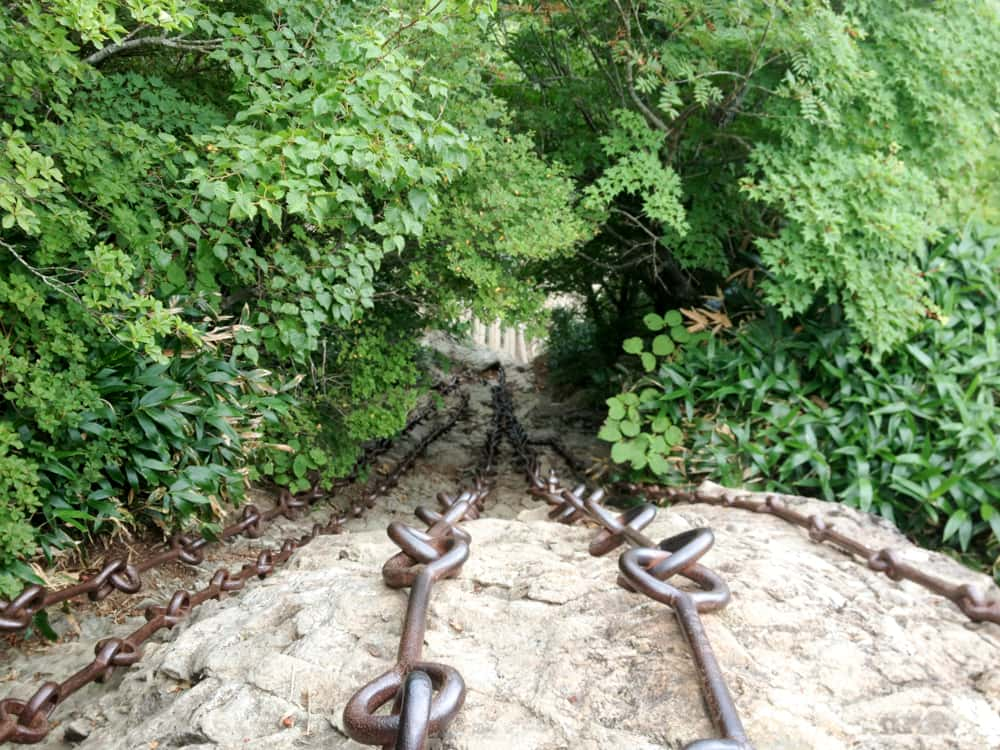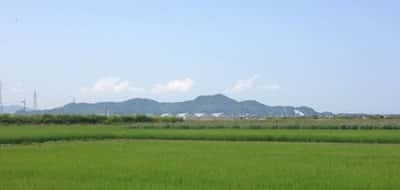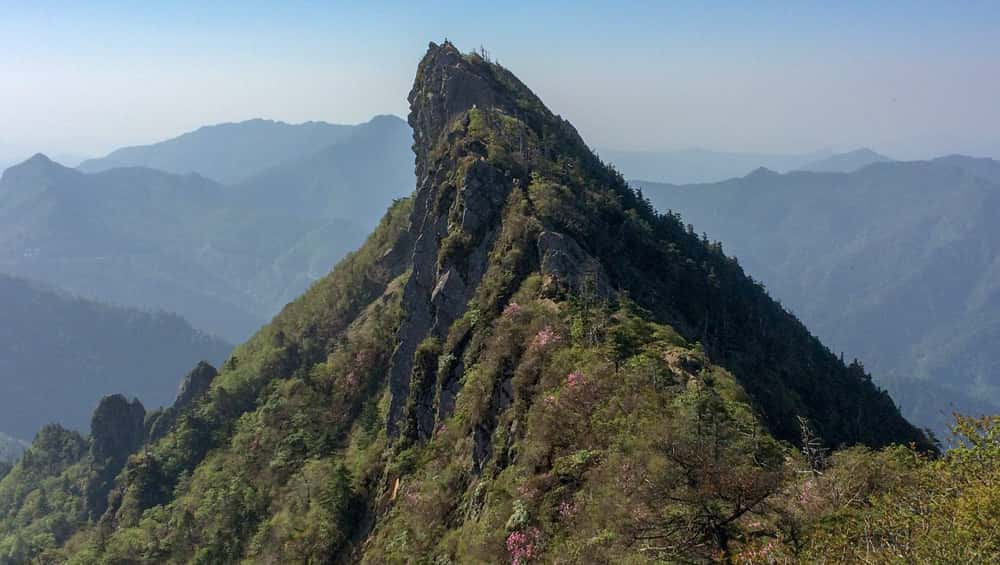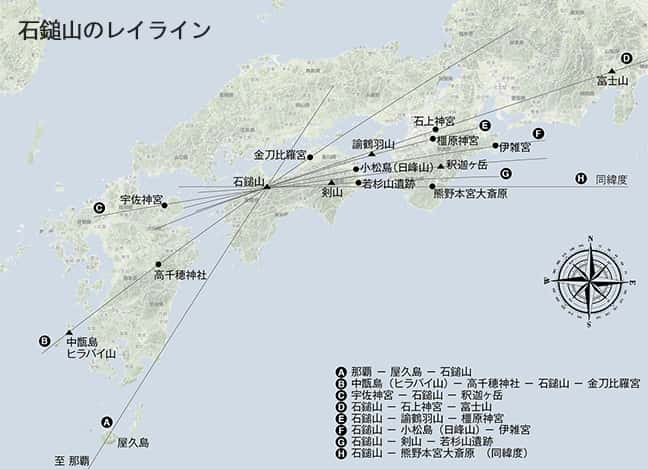Reihou Ishizuchisan
Ishizuchisan is a sacred mountain located in the western part of the Shikoku Mountains in Ehime Prefecture, and is the highest mountain rising 1,982 meters above sea level in western Japan. Ishizuchisan is known as one of the 100 most famous mountains in Japan and is one of the Seven Sacred Mountains of Japan. Ishizuchisan can be written in three different ways using Chinese characters, 石槌山、石鉄山、石土山. Since ancient times, Ishizuchisan has long been the object of mountain worship and climbed by ascetics.
Ishizuchisan was founded during the Asuka period (710-794) in 657 by Enno Ozune, the founder of Shugendo (mountain asceticism), as he was on his way to ascetic training on Ryūouzan. Soon after, a ceremony for Kumano Gongen was performed, and Ishizuchisan became famous for being a training site during the Nara period (710-794) and in the Heian period (794-1185), Kukai (794-1185) practiced asceticism on Ishizuchisan and was recorded in “Sangoshiikii” wirtten by him.
Kumano Kami and Ishizuchisan
The story Kumano Gongen Gosuijaku Engi was written in the late Heian period (12th century), and contains a description of the connection between Kumano Gongen, or the deity Kumano, and Ishizuchisan. A long time ago, Ojishin of Tendaisan in Tang Dynasty China, landed on Hikoyama in Kyushu, and then flew to Yuzuruhasan in Awaji Island from Ishizuchisan, the peak of Ishizuchi in Iyo Kuni (now known as Ehime Prefecture), and finally to Kamikurasan near Kumano Shingu in the southernmost part of the Kii Peninsula, where he was lastly enshrined on Oyunohara in Kumano Hongu. Ishizuchisan is said to be a reizan not only because its name is mentioned in history books, but also the ancient saints kept practicing asceticism on the mountain.
Ishizuchisan test chains

Ishizuchisan test chainsThe inner shrine of Ishizuchi Shrine on Ishizuchisan is located on the summit of the mountain. The central shrine, Joujusha, is built in the middle of the mountain and the main shrine is located at the foot of the mountain. The deity Ishizuchihiko-no-mikoto is also known as Ishizuchi Ookami.
Ishizuchisan is also famous for the climbing of a precipitous cliff with chains, also known as the Chain Zenjyo, begins with the test chain, the first chain, second chain, and third chain are followed by a steep rocky slope of 239 meters in total, which people climb by relying on the chains. The summit Shrine is located at the top of the third chain.
Ishizuchisan Ley Line
Ishizuchi is the highest peak in western Japan, and its summit can be seen from the Seto Inland Sea. From the summit one could see Mt. Daisen along the Japan Sea. The panoramic view from the summit is exceptional, and in ancient times it was used as a ley line landmark. The ley lines can still be seen today on the ley line map as shonw below.
The first ley line of interest is the straight line connecting from Ishizuchisan to Kumano Hongu Yuzuruhasan. According to historical books, Kumano Gongen descended to Takakurayama in Kumano via Mount Ishizuchi and Yuzuruhasan, and then was enshrined at Kumano Hongu Oyunohara. Oyunohara is located at the same latitude as Ishizuchisan. The reason why the land of Oyunohara was found along a river in the Kumano backcountry cannot be explained without the existence of Ichizuchisan.
Furthermore, if we go back to the time of the descendant of Amaterasu, Ninigi-no-Mikoto who descended to Takachiho according to the Chronicles of Japan, and examine the ley line connecting Takachiho and Ishizuchisan the Konpira Shrine, which was considered important by the ancient powerful maritime families, is located along that line. Mt. Hirabai located at the same latitude as Jerusalem in Israel, is also on the southern side of this same line. In the time of the descent of the Amaterasu, the Israelites who crossed the sea from the Asian continent and moved northward across the Ryukyu Islands must have first found Mt.Hirabaithat is connected with Jerusalem by ley line. Later, the holy sites of Takachiho and Konpira Shrine were found on the ley line connecting Ishizuchisan and Mt. Hirabai.
Is Hinominesan an island of the Onogoro Islands?

Hinominesan in KomatsushimaHinominesan is located on Komatsushima in Tokushima and is a historic island with the potential to be an Onogoro Island. To the east on the ley line connecting Ishizuchisan and Hinominesan is the Izawanomiya, which in ancient times was used as a port for ships accessing the Kii Peninsula from the sea. It is also known as the inner shrine of the later Ise Shrine. The relationship between Mt.Fuji and Ishizuchisan also is important. IsonokamiShrine in Nara, a famous ancient Shinto shrine mentioned in the Chronicles of Japan, is located on the line connecting the two sacred mountains. Today, the Kashihara Jingu Shrine stands on the site where the first Emperor Jinmu is said to have built his palace. The location of the shrine is on the line connecting Ishizuchisan and the Yuzuruhasan, which indicates that the reizan Ishizuchisan was extremely important to the imperial family.
Ley lines of Ishizuchisan along with ancient sacred places
From the ley line coming from Ishizuchisan, we can see how ancient sacred sites are connected to each other based on reizan. On these ley lines, Mt. Fuji, Yuzuruhasan, Tsurugisan, and Mt. Shakagatake, as well as Kumano Hongu Oyunohara, Takachiho, Izawanomiya, IsonokamiShrine, and Kashihara Shrine, all of which are famous as ancient sacred sites, are found. The presence of these sacred sites dates back to the time of the birth of Japan as a nation, and Ishizuchisan was recognized as a reizan in the ancient days. It is no wonder how Ishizuchisan has been revered as a sacred mountain since ancient times.


